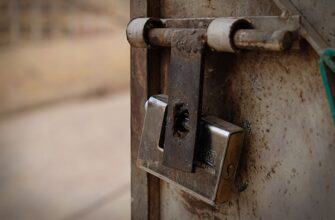🔐 USDT Mixer — Total Privacy for Your Crypto
Experience fast and secure USDT TRC20 mixing. 🌀
No accounts. No records. Just full anonymity, 24/7. ✅
Service fees start at only 0.5%.
Private keys are the crown jewels of digital security, granting access to encrypted data, cryptocurrency wallets, and secure communications. Encrypting them with a password transforms your key from a vulnerable file into a fortified digital asset. This guide details essential best practices for password-based private key encryption to prevent unauthorized access and catastrophic security breaches.
Why Password Encryption for Private Keys is Non-Negotiable
Unencrypted private keys are low-hanging fruit for attackers. A single breach could lead to:
- Stolen cryptocurrency or financial assets
- Compromised email or messaging accounts
- Identity theft through digital certificate misuse
- Unauthorized access to secured servers or databases
Password encryption adds a critical layer of protection, ensuring that even if your key file is stolen, it remains useless without your secret passphrase.
10 Best Practices for Encrypting Private Keys with Passwords
- Use Strong, Unique Passphrases: Create 16+ character passwords mixing uppercase, lowercase, numbers, and symbols. Avoid dictionary words or personal information.
- Leverage Password Managers (e.g., Bitwarden, KeePass): Generate and store complex passwords securely instead of memorizing them.
- Choose Modern Encryption Algorithms: Opt for AES-256 or ChaCha20 instead of outdated standards like DES or 3DES.
- Verify Software Authenticity: Only use trusted tools like OpenSSL, GnuPG, or audited open-source applications.
- Enable High Iteration Counts: Set PBKDF2 iterations to 100,000+ or use Argon2 to slow down brute-force attacks.
- Store Encrypted Keys Offline: Keep password-protected keys on encrypted USB drives or hardware wallets—never in cloud storage.
- Implement Multi-Factor Backups: Split backups geographically (e.g., home safe + bank vault) using Shamir’s Secret Sharing if supported.
- Regularly Rotate Passwords: Change encryption passwords annually or after any security incident.
- Never Reuse Passwords: Each private key deserves a unique encryption passphrase.
- Test Recovery Procedures: Periodically verify you can decrypt keys with your password before emergencies occur.
Step-by-Step: How to Encrypt a Private Key with OpenSSL
Using OpenSSL (industry-standard tool):
- Install OpenSSL on your system
- Run terminal command:
openssl genpkey -algorithm RSA -out private.key - Encrypt the key:
openssl pkcs8 -topk8 -v2 aes-256-cbc -in private.key -out encrypted.key - Enter your strong password when prompted
- Securely delete the original unencrypted private.key file
Critical Mistakes to Avoid
- ❌ Using weak passwords like “password123” or “letmein”
- ❌ Storing encrypted keys on internet-connected devices
- ❌ Emailing encrypted keys or passwords together
- ❌ Skipping verification of file integrity via checksums
- ❌ Relying solely on biometrics without password fallback
Frequently Asked Questions
Q: Can I recover an encrypted key if I forget the password?
A: No. Without the password, decryption is mathematically impossible. This emphasizes the need for secure password management.
Q: How often should I change my private key encryption password?
A: Annually, or immediately after any suspicion of compromise. Use password managers to simplify updates.
Q: Are hardware wallets safer than software encryption?
A: Yes. Hardware wallets (e.g., Ledger, Trezor) store keys offline with dedicated secure elements, providing superior protection against malware.
Q: Can quantum computers break encrypted private keys?
A: Current encryption (AES-256) remains quantum-resistant. Future threats may require transitioning to post-quantum cryptography algorithms.
Q: Should I encrypt keys stored on encrypted drives?
A: Absolutely. Defense-in-depth is crucial—encrypt the key file itself even if the drive is encrypted.
Q: Is password length or complexity more important?
A: Length is paramount. A 20-character passphrase with moderate complexity is stronger than a 10-character highly complex password.
By implementing these best practices, you transform your private key from a security liability into a robust digital shield. Remember: In cryptography, convenience is the enemy of security—prioritize protection over shortcuts.
🔐 USDT Mixer — Total Privacy for Your Crypto
Experience fast and secure USDT TRC20 mixing. 🌀
No accounts. No records. Just full anonymity, 24/7. ✅
Service fees start at only 0.5%.








